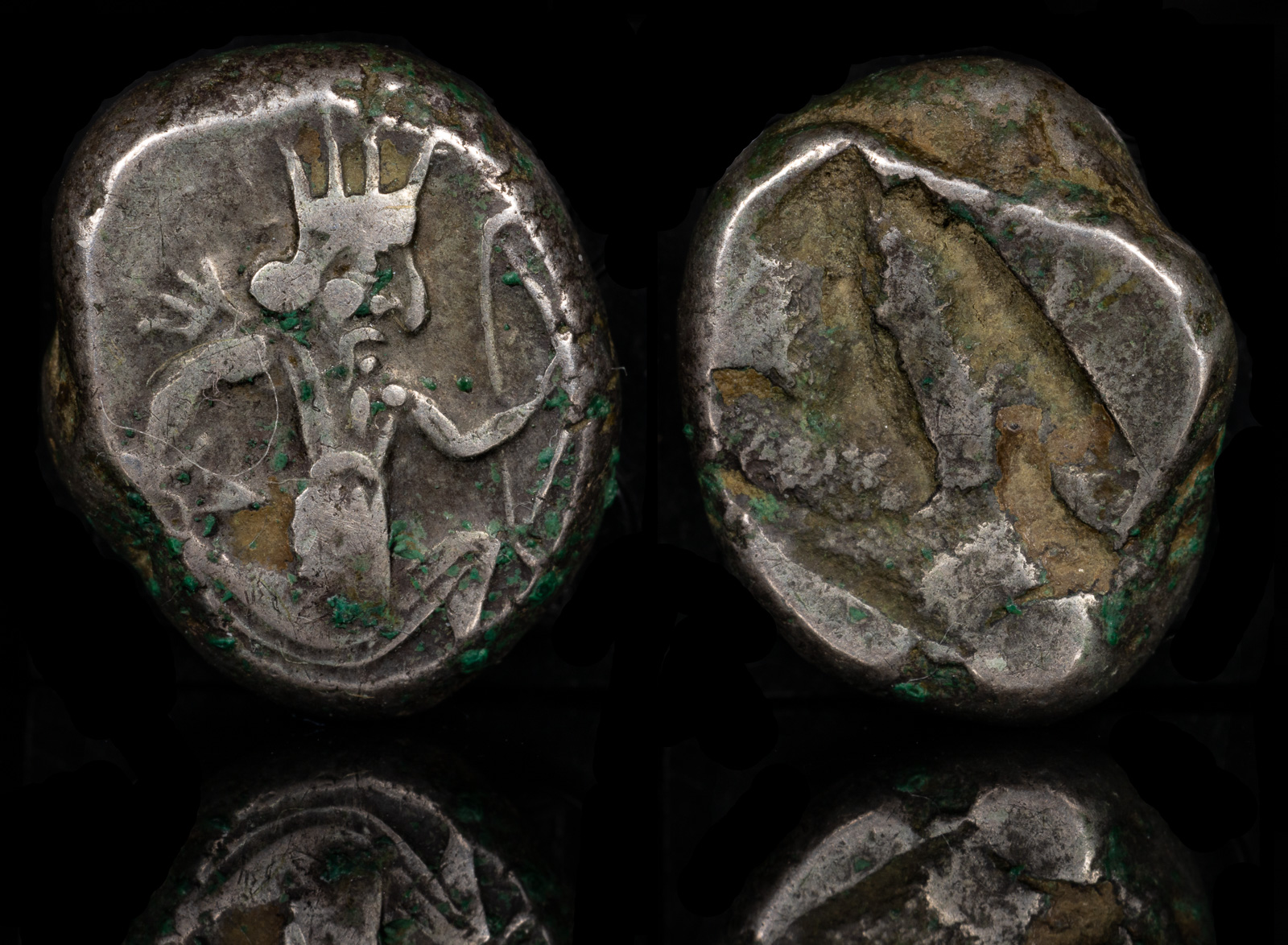
Achaemenid Kings of Persia
AR-Siglos 5.6 gm, 15mm
Sardis. c. 375-340 BCE
Obv: King r., dagger and bow. Rev: Incuse rectangle
Carradice Type IV C (pl.14, 49); BMC Arabia pl. 27, 19
Ex Akropolis Coins (PeteB)
This is a silver siglos produced either during Darius III’s lifetime, or during that of one of his predecessors. It depicts a king running with a bow and dagger. While in elementary school we would have been cautioned against running while holding both a bow and a dagger, clearly Persian kings never had such warnings.
In this case, the act of running was certainly spot on. Darius III was renowned for personally wetting himself at the battle of Issus, then outrunning all others from the field in the Battle of Gaugamela. He ran so quickly, in fact, that even Alexander the Great couldn’t catch him.
Darius III certainly didn’t start out so badly. He took power in 336 BCE, and soon noticed an interesting phenomenon. His predecessor, Ataxerxes IV, had died of poisoning. Ataxerxes III, before him, had also perished from poisoning, along with the majority of his family. When his eunuch Bagoas suggested they drink to his health, Darius simply had Bagoas drink first, and in that trivial way found the chief poisoner.
Nevertheless, Darius III will go down as one of the most ineffectual wartime leaders of all time. His strategy of running from each battle, then suing for peace with increasingly large portions of his empire, had disastrous consequences. Constantly chased by Alexander, Darius was eventually killed by his satraps Bessus and Nabarzanes. When Alexander found the ex-king in an ox-cart, he sent the body back for a royal funeral. Bessus, on the other hand, was eventually hunted down and executed by Alexander.
Approximate birth of Darius III under the name Artashata.
Probable birth year of Amastris to Oxyathres, the brother of Darius III.
Arses attempts to gain freedom from Bagoas on the Persian throne, but is poisoned and killed by him. Bagoas places Darius III on the throne.
Memnon of Rhodes is tasked by Darius III with taking Kyzikos and nearly does. It is defended by Kalas.
October
Bagoas attempts to poison Darius III, who orders Bagoas to drink it. Bagoas dies.
Memnon of Rhodes urges Darius III to foster a rebellion in Greece, but Darius refuses out of distrust for Memnon since he is Greek.
May
The Battle of the Granicus, during which Alexander the Great defeated the Persians under Darius III, and after which Adramytteion and Kaunos come under his control. Kalas participates with the Thessalian cavalry under Parmenion. Perdikkas serves on the right.
November 5
Alexander the Great defeats Darius III at the Battle of Issos. Ptolemy I Soter serves on the left wing under Parmenion.
Alexander the Great enters Babylon after defeating Darius III at the Battle of Gaugamela.
Mazaios is ordered by Darius III to prevent Alexander III from crossing the Euphrates, but he doesn’t have the numbers to accomplish this.
October 1
Alexander the Great defeats Darius III at the Battle of Gaugamela. Mazaios serves on the right flank of Darius.
July
Darius III is killed by his satrap Bessos and his body left for Alexander the Great to find.